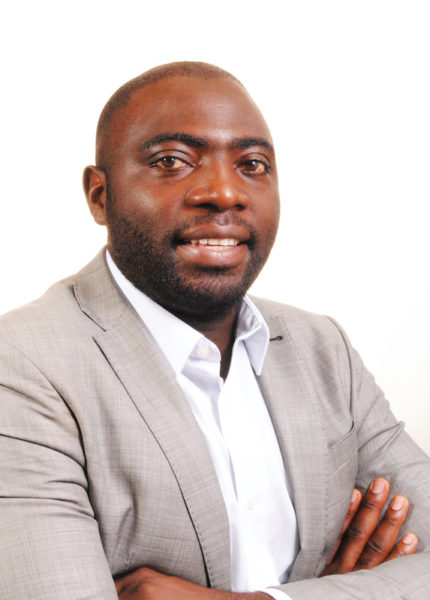TORONTO, April 12, 2021 – An Artificial Intelligence (AI)-based algorithm, designed by the University of the Witwatersrand (Wits University) in partnership with York University, iThemba LABS, and the Provincial Government of Gauteng, shows there is a low risk for a third wave of COVID-19 infection in all provinces of South Africa.
The algorithm was designed as part of the project “Predictive modeling and forecasting of the transmission of COVID-19 in Africa using Artificial Intelligence,” led by York University Assistant Professor Jude Kong of the Department of Mathematics and Statistics, Faculty of Science, director of Africa-Canada Artificial Intelligence and Data Innovation Consortium.
 “The system we have developed in partnership with University of Witswatersrand allows us to predict future daily confirmed cases, based on historical data about South Africa’s past infections,” says Kong. “This gives us crucial insight into the current state of the pandemic and can be used by policymakers to plan public health measures accordingly.”
“The system we have developed in partnership with University of Witswatersrand allows us to predict future daily confirmed cases, based on historical data about South Africa’s past infections,” says Kong. “This gives us crucial insight into the current state of the pandemic and can be used by policymakers to plan public health measures accordingly.”
This novel AI-powered early detection system includes features such as mobility and stringency indices, and epidemiological parameters. The AI-based algorithm works in parallel with and supports the analysis of an already existing algorithm that is based on more classical analytics. These algorithms work independently, and the data and analyses are updated daily and published on the South Africa 3rd Wave Risk Index with AI website. The existence of two independent algorithms adds robustness to the predictive capacity to better contain and control the pandemic.
“The current data shows us the risk for a third infection wave of COVID-19 is small across most of provinces in South Africa, but we still remain highly vulnerable,” says Professor Bruce Mellado, director of the Institute for Collider Particle Physics at Wits University.
It is still crucial that everyone continues to adhere to the South African government’s COVID regulations and takes all necessary precautions to prevent the spread of the virus. The development of infection waves is driven by circumstances that are difficult to predict and therefore to control.
In this complex environment, early detection algorithms provide an early warning for policymakers to issue alerts to the population when the data display a significant change that is consistent with the progression of a new wave.
“We are also developing methodologies to transfer this knowledge and modelling to other African countries by taking into account the difference in demographics and prevalence of co-morbidities,” says Kong.
While algorithm-based predictions can never be 100 per cent accurate, Mellado is confident that the new AI-based model provides better predictions over at least a two-week period. While predictions can be made over longer-term periods, these predictions become less accurate. The novel AI-based model is trained using data collected between waves one and two from all provinces in South Africa.
"AI technology provides us with invaluable potential to develop early detection and alert systems that are highly needed for rapid and dynamic decision making under risk and uncertainty under the current pandemic," says Disaster & Emergency Management Professor Ali Asgary of the Faculty of Liberal & Professional Studies and associate director of York University's Advanced Disaster, Emergency, and Rapid-response Simulation.
AI is very effective at navigating through complex problems with many parameters and dimensions at the same time as it learns from the data.
“These parameters are consistent with clinical public health measures that can contain, control and mitigate against the COVID-19 pandemic,” says Dr. James Orbinski, director of the York University Dahdaleh Institute for Global Health Research.
Professors from three faculties and four major research centres and laboratories at York contributed their expertise to the design of the algorithm, including Distinguished Research Professor Jianhong Wu of the Faculty of Science, director of the Laboratory for Industrial and Applied Mathematics, who leads the National COVID-19 Modeling Rapid Response Task Force at York. The project received funding from Canada's International Development Research Centre.
-30-
York University is a modern, multi-campus, urban university located in Toronto, Ontario. Backed by a diverse group of students, faculty, staff, alumni and partners, we bring a uniquely global perspective to help solve societal challenges, drive positive change and prepare our students for success. York's fully bilingual Glendon Campus is home to Southern Ontario's Centre of Excellence for French Language and Bilingual Postsecondary Education. York’s campuses in Costa Rica and India offer students exceptional transnational learning opportunities and innovative programs. Together, we can make things right for our communities, our planet, and our future.
Media Contact:
Sandra McLean, York University Media Relations, 416-272-6317, sandramc@yorku.ca

